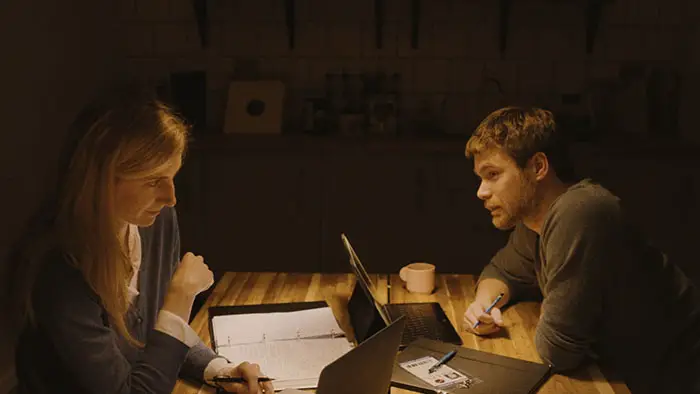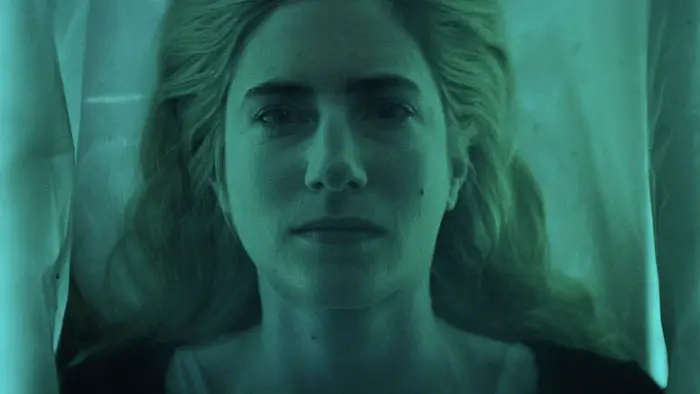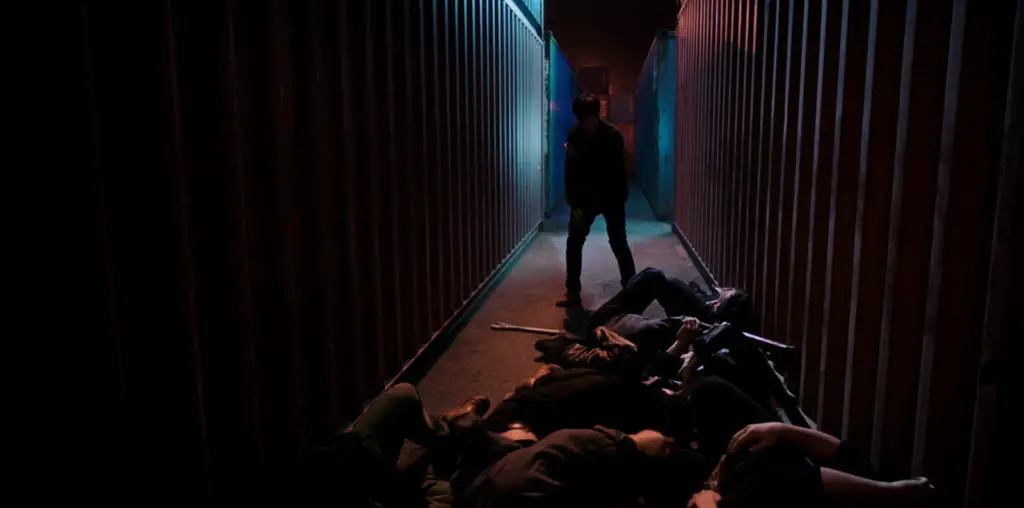
There’s no doubt that detailing the enterprises of humans in space are not exciting and action-packed, which makes them enjoyable to watch. Even if in almost every space movie with some kind of technical malfunction, those involved try to find a way to solve the problem in a clichéd dramatic and stentorian manner. Okay, so it’s clichéd, who cares? It works, right? Of course, otherwise, it wouldn’t be a cliché. We Choose To Go, however, is not just another space movie, and it is completely original. The situations that occur were created by an extremely talented team from London Film School, who illustrate the reactions to space and malfunction as the exact opposite from typical sci-fi with an emphasis on human involvement.
The lead character Angie is expertly portrayed by Sarah Flower, who single-handedly carries the film in its entirety for the whole of its 13-minute run time with an objective, stoic, and objective approach to her new objective—stay alive.

“The design is flawless with not even a hint of painted polystyrene or poorly positioned piping.”
When informed of her fate, Angie doesn’t panic. She doesn’t run around the ship shooting lasers or start slapping dials in the hope of success, she simply sits quietly and thinks. She accepts her circumstance and reflects on her abandoned life on Earth as simply as Shakespeare describes death. Not only is her performance so beautifully and maturely embodied as a professional woman who has wanted to go into space since she was born, but even in defeat, she is level headed and intelligent with her minimalistic approach to subtle yet highly effective and emotive acting.
Flower’s acting alone is extremely enticing and commendable for viewers, solidified, authenticated, and complimented by Emily Marquet and Gaia Milizia’s equally genuine set design. Considering its low-budget, a huge margin for error in getting details wrong. The environment, like Flower’s performance, is subtle yet outstanding, with special mention to the augmented touch screens on the cryo-pods and interior cladding of the spacecraft itself. The design is flawless with not even a hint of painted polystyrene or poorly positioned piping. We Choose To Go surpasses the short film as a category, making it a must-watch for sci-fi lovers who seek a more philosophical style of a sci-fi movie. With the additional amount of information in a short span of time, one leaves the viewing with the question, “Are dreams worth pursuing if it means wrecking a perfectly good life in order to achieve them?”

"…life full of love that she gave up for the pursuit to fulfill her dreams..."


